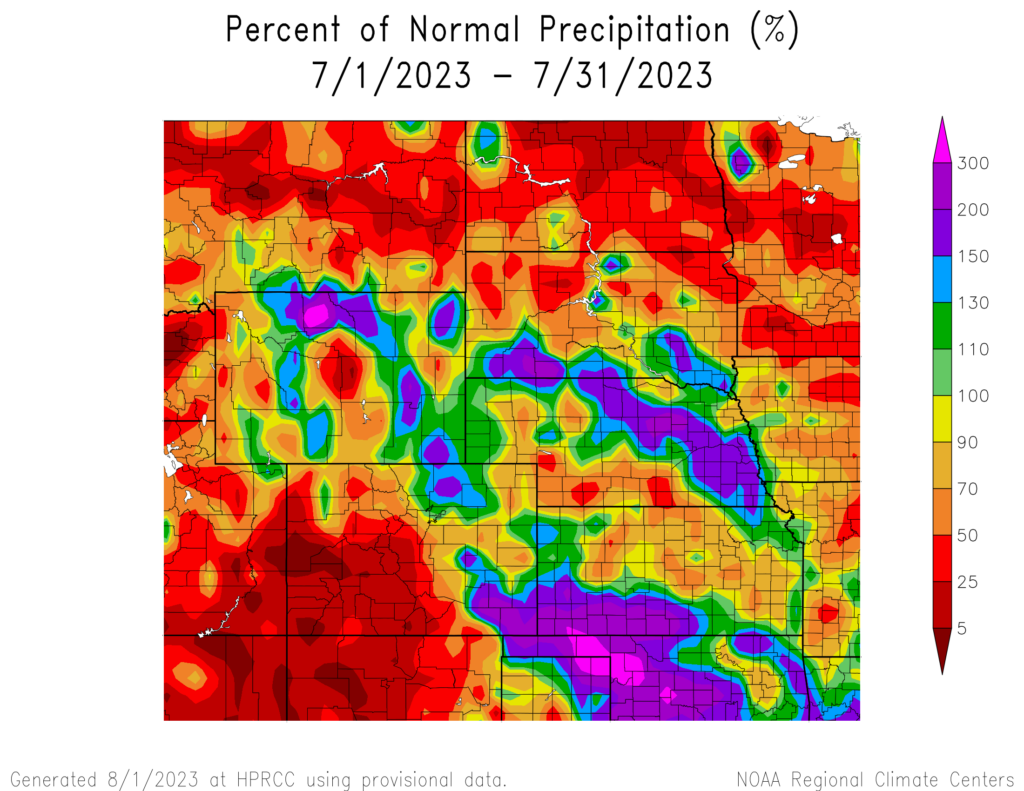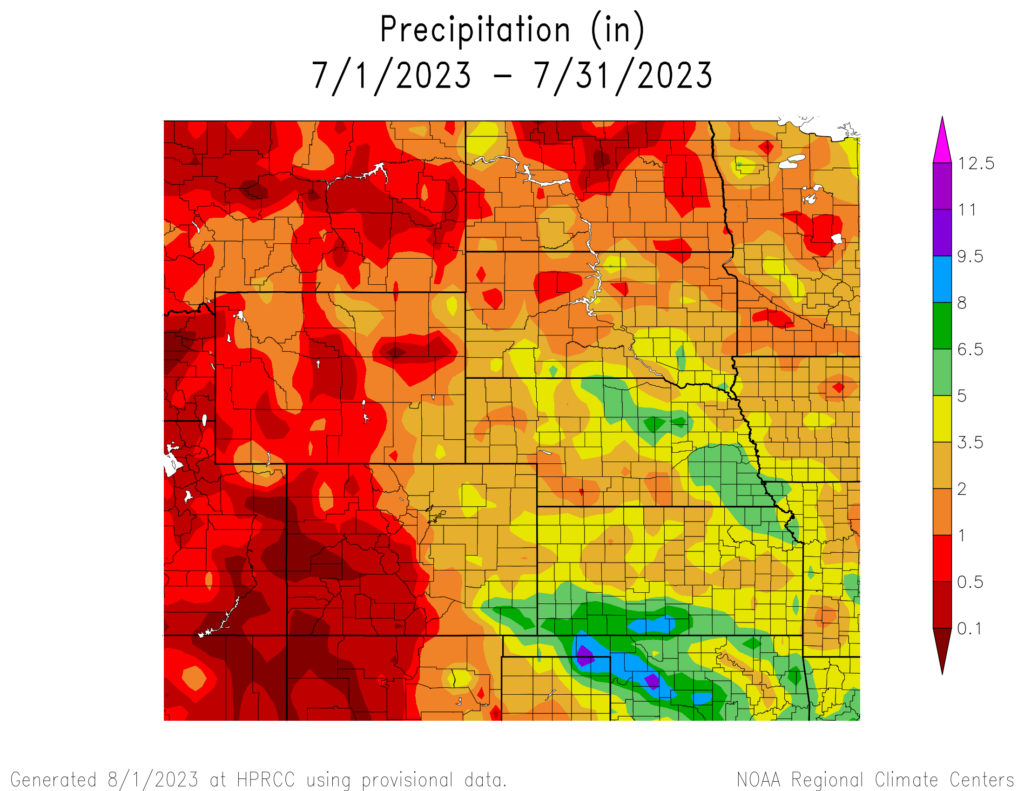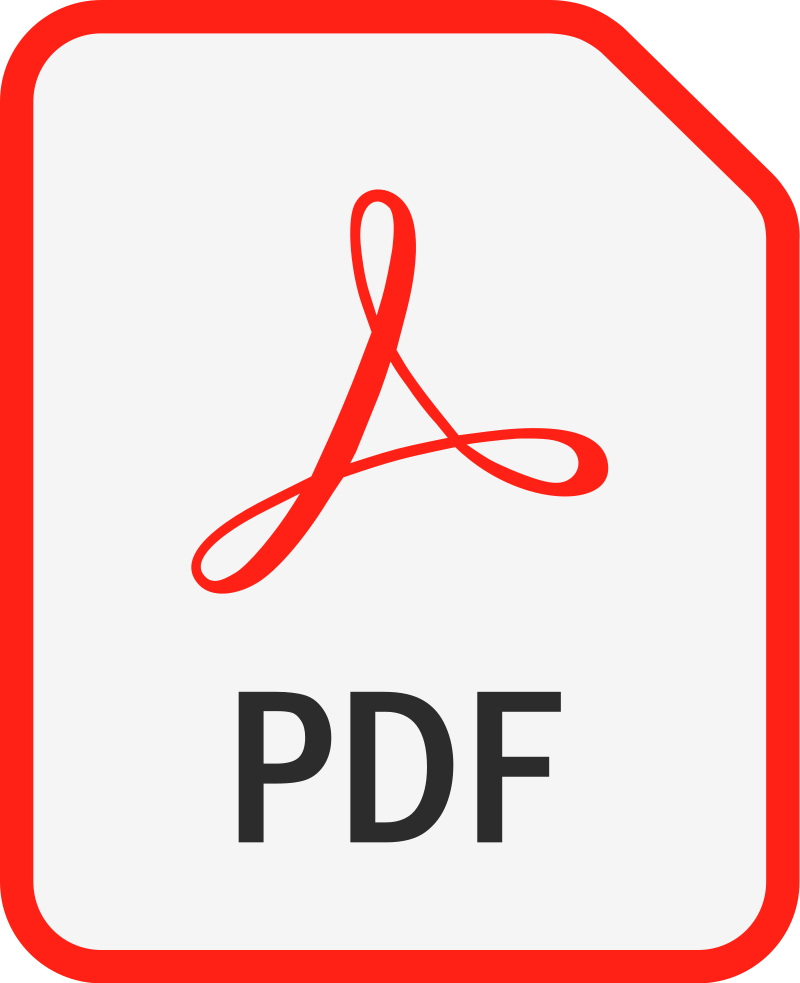
July 2023 Climate Summary
Storm over Lincoln, Nebraska, Photo Courtesy of Gannon Rush
Regional Breakdown
July was a mixed bag of weather for the High Plains. Precipitation was greatly needed for some, while others received next to nothing. Cooler temperatures dominated much of the region, despite a heatwave late in the month.
Wheat harvest in Kansas began at the beginning of June, with most of it harvested by the fourth of July. Around this time, however, storms pushed through the state nearly every other day which caused numerous delays. Weeds became a significant issue, and the quality of the wheat began to decline. Some places, such as Morton County, didn’t have the first loads of wheat to the Co-op until early July. The same county also reported 70 to 75 percent of planted acres and were zeroed out by crop insurance due to the ongoing multi-year drought. The average yield for the state is expected to be historically low, with an average of 32 bushels an acre.
Corn and soybeans are in decent shape throughout the region, with a large portion of crops in fair to good shape. Pasture and range conditions are improving, with only small numbers in very poor shape. Conditions could see further improvement in August, with the majority of agricultural production areas having a chance of above-normal precipitation.



Precipitation and Water Resources
Aside from scattered pockets of above-normal precipitation, the region was fairly dry this month. Western Colorado and the majority of North Dakota were well below normal, with places of near-record dryness.
While eastern Colorado has received normal to above normal precipitation these past few months, the western part of the state has not been so lucky. Grand Junction tied with 1898 for the driest on record, while Alamosa was the driest. Next to zero precipitation occurred in both places this month and combined with the recent heat, drought conditions have begun to be reintroduced in the southwestern part of the state.
Among those who missed the rain this month include McCook, Nebraska, and the surrounding area. Just a few months ago, they recorded their wettest month ever by a large margin and greatly improved the ongoing drought. This month was a setback, as only 0.50 inches (12.7 mm) precipitation occurred, and it was ranked 5th driest. At the end of June, they ranked 10th wettest for January through June period. Currently, they rank 25th after a meager July precipitation.
For the portions of the region that did receive precipitation, the majority of it was related to severe weather. Kansas, Colorado, and Nebraska recorded their highest number of severe thunderstorm warnings issued (period of record 2002 to present). Over 350 were issued in each state, with Colorado also recording their most tornado warnings as well. On the 20th, a whopping 115 mph (185 km/h) gust was recorded outside of Wallace, Kansas. A building was completely destroyed by the winds, while other locations were pummeled by the combination of the wind and up to 2.5 inch (6.35 cm) hail.
Streamflow is in good shape for the region, except for Kansas and parts of Nebraska. Conditions are below to much below normal along the Kansas-Nebraska border and eastern Kansas. Some stations were at record lows at the end of July.


Temperatures
Temperatures were cooler for many places, however, an oppressive heatwave occurred towards the end of the month with temperatures well above 100 degrees F (37.8 degrees C).
Western Colorado experienced well above-normal temperatures throughout the month, with the heatwave only adding fuel to the fire. Alamosa tied with 2003 for the 2nd warmest and narrowly missed the record, with an average temperature of 68.2 degrees F (20.1 degrees C). Grand Junction also ranked 2nd warmest, with an average temperature of 83.3 degrees F (28.5 degrees C). The average high temperature for Grand Junction was 99.3 degrees F (37.4 degrees C) for July, which is the 2nd warmest month on record.
The heatwave that impacted the region late in the month not only brought scorching temperatures but also set some notable records. On the 17th, Grand Junction tied with July 9th, 2021 for the highest all-time temperature of 107 degrees F (41.7 degrees C). Lawrence, Kansas recorded its highest July low temperature 84 degrees F (28.9 degrees C) on the 27th. It was also the 4th highest low temperature of all time.
Drought Conditions
Drought conditions improved this month, particularly in Kansas and Nebraska. However, North Dakota and southwestern Colorado were extremely dry, resulting in drought conditions rapidly intensifying. Overall, abnormally dry to exceptional drought (D0-D4) was reduced by a little over 2 percent in the region.
The drought that has plagued Kansas and Nebraska has seen steady improvement this summer. Above-normal precipitation across eastern Nebraska reduced D4 in the state by nearly 11 percent this month. On the opposite end of the spectrum, southwestern Colorado was near bone dry and observed a 25 percent increase in D0-D4. North Dakota also experienced a rapid increase in moderate to exceptional drought (D1-D4). Elsewhere in the region, other localized improvements and degradations were observed.


Department of Agriculture (USDA), National Drought Mitigation
Center, U.S. Department of Commerce, and the National Oceanic and
Atmospheric Administration (NOAA). For current Drought Monitor
information, please see: http://droughtmonitor.unl.edu/
Climate Outlooks
According to the Climate Prediction Center, an El Niño Advisory has been issued and conditions are likely to increase over the coming months. For more information, visit https://www.cpc.ncep.noaa.gov/products/analysis_monitoring/lanina/enso_evolution-status-fcsts-web.pdf
The National Weather Service’s long-range flood outlook indicates increased chances of Minor Flooding in central South Dakota and western Nebraska. According to the National Interagency Fire Center (NIFC), fire potential will be limited across the region through November.
The seasonal temperature and precipitation outlook presented below combine the effects of long-term trends, soil moisture, and when applicable, the El Niño Southern Oscillation (ENSO). To learn more about these outlooks, please visit http://www.cpc.ncep.noaa.gov.
Temperature
The three-month temperature outlook shows an increased chance of above-normal temperatures across the United States, except for the central states. Increased chances of above-normal temperatures are present in Colorado, Wyoming, and western Kansas. Slight chances of below normal temperatures are present in eastern Nebraska, northeastern Kansas, and southeastern South Dakota.

Precipitation
The outlook for the next three months indicates below-normal precipitation in parts of the southwestern and northwestern United States, while above-normal precipitation is favored for the east-central part of the country.

Drought
The U.S Seasonal Drought Outlook released on July 31st indicates drought conditions will likely improve across the region, while development is likely in western Colorado.

Station Summaries: By the Number






Download PDF Below


